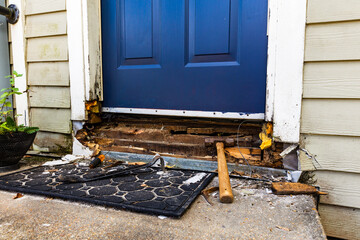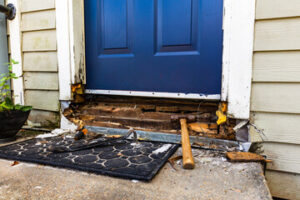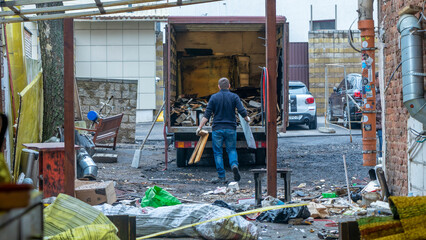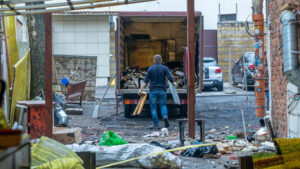Plumber Westminster plays an essential role in maintaining modern infrastructure. They ensure that water systems work efficiently and safely. Plumbing services cover a wide range of tasks beyond fixing leaks. Proper plumbing enhances the comfort and safety of residential and commercial spaces.
Plumbing systems are complex networks of pipes, valves, and fixtures. Each component must be installed correctly to avoid future problems. Plumbers are trained to handle different materials and configurations. Their expertise ensures that water flows smoothly through the system.
Leak detection is one of the most common plumbing tasks. Small leaks can lead to major water damage if left unattended. Plumbers use advanced tools to identify hidden leaks. Early detection helps prevent costly repairs.
Blocked drains and sewer lines require immediate attention. Plumbers use specialized equipment to clear blockages. High-pressure water jets and drain snakes are effective for removing debris. Clearing blockages prevents backups and foul odors.
Installing new plumbing systems requires careful planning. Plumbers work with architects and contractors during construction. They determine the best placement for pipes and fixtures. Proper installation ensures long-term functionality.
Repairing damaged pipes involves more than just patching leaks. Corroded or cracked pipes need to be replaced to avoid future problems. Plumbers assess the extent of the damage before proceeding. Using quality materials ensures lasting repairs.
Water heater installation and maintenance are specialized tasks. Plumbers ensure that heaters are installed according to safety codes. They also test for proper temperature and pressure settings. Routine maintenance extends the life of the heater.
Plumbing for kitchens and bathrooms requires attention to detail. Sink, faucet, and shower installations must be secure and leak-free. Plumbers also install garbage disposals and water filtration systems. Proper installation improves water efficiency and hygiene.
Plumbers are skilled in working with both residential and commercial plumbing systems. Commercial systems are larger and more complex. They require higher water pressure and greater capacity. Plumbers adjust their methods based on system size and usage.
Water quality testing is an important part of plumbing services. Plumbers check for contaminants and mineral buildup. They recommend filtration or softening systems if needed. Clean water improves health and appliance performance.
Gas line installation and repair require specialized training. Leaking gas lines pose serious safety hazards. Plumbers use pressure tests and leak detection tools to ensure safety. Proper sealing and ventilation are critical for safe operation.
Emergency plumbing services are available for urgent issues. Burst pipes, overflowing toilets, and sewage backups require immediate action. Plumbers respond quickly to minimize water damage. Fast repairs restore normal function to the system.
Plumbing maintenance helps prevent major problems. Plumbers inspect pipes, drains, and fixtures for wear and tear. They clean and tighten connections to prevent leaks. Regular maintenance extends the lifespan of the plumbing system.
Plumbers also handle outdoor plumbing systems. Irrigation systems and hose bibs need proper installation and maintenance. Freezing temperatures can cause outdoor pipes to crack. Insulation and drainage solutions prevent cold-weather damage.
Water pressure issues can result from various plumbing problems. Low pressure may indicate a clog or leak. High pressure can stress pipes and fixtures. Plumbers diagnose and adjust pressure levels for balanced flow.
Plumbers work with a range of materials, including copper, PVC, and PEX. Each material has different strengths and weaknesses. Proper material selection ensures compatibility with water quality and pressure. Expert installation prevents premature wear.
Clogged toilets are a frequent plumbing problem. Plumbers use plungers and augers to remove blockages. Persistent clogs may indicate a deeper sewer line issue. Professional assessment ensures proper resolution.
Backflow prevention is essential for protecting water quality. Contaminated water can flow back into clean water lines. Plumbers install backflow preventers to stop reverse flow. Regular testing ensures proper function.
Plumbers handle pipe rerouting for remodeling projects. Changing the location of sinks, showers, or toilets requires careful planning. Existing pipes may need to be removed or extended. Proper rerouting prevents leaks and flow issues.
Frozen pipes are a risk in cold weather. Expanding ice can cause pipes to burst. Plumbers thaw frozen pipes using heat and pressure. Insulation and proper drainage prevent future freezing.
Septic system maintenance is another key plumbing task. Plumbers pump and inspect septic tanks to prevent overflow. They also check drain fields for blockages. Proper maintenance ensures effective waste disposal.
Rainwater drainage systems require careful design. Gutters and downspouts direct water away from the building. Poor drainage can lead to foundation damage. Plumbers install and maintain drainage systems to prevent water buildup.
Plumbers also install water-saving fixtures. Low-flow faucets and showerheads reduce water usage. Dual-flush toilets help conserve water. Water-efficient fixtures lower utility costs and support environmental sustainability.
Appliance installation requires plumbing expertise. Dishwashers and washing machines need secure water and drain connections. Improper installation can lead to leaks and malfunctions. Plumbers ensure that appliances function efficiently.
Water softener systems remove excess minerals from water. Hard water can cause buildup in pipes and appliances. Plumbers install and maintain softening systems to improve water quality. Soft water enhances the performance of soaps and detergents.
Plumbers assist with bathroom renovations. Installing new sinks, toilets, and showers requires precise measurements. Water lines and drains must align correctly with fixtures. Professional installation ensures proper function and appearance.
Plumbing code compliance is essential for safety and efficiency. Plumbers stay updated on local regulations. They ensure that all installations meet code requirements. Compliance prevents legal issues and ensures proper system performance.
Leak detection technology has advanced in recent years. Plumbers use acoustic sensors and infrared cameras to locate hidden leaks. These tools reduce the need for invasive repairs. Early detection minimizes water damage.
Plumbers provide trenchless pipe repair for minimal disruption. Traditional repairs require digging and excavation. Trenchless methods use liners and epoxy to seal leaks. This approach saves time and preserves landscaping.
Water conservation techniques are becoming more common. Plumbers install rainwater collection and greywater recycling systems. Reusing water reduces demand on municipal supplies. Conservation efforts support environmental sustainability.
Plumbing fixtures and styles continue to evolve. Modern designs include touchless faucets and smart water heaters. Plumbers stay informed about new technologies. Professional installation ensures compatibility with existing systems.
Plumbers handle underground pipe installation and repair. Pipes beneath foundations require specialized equipment and techniques. Pressure testing ensures proper sealing and alignment. Underground systems must withstand soil pressure and shifting.
Emergency shutoff valve installation is a key safety measure. Quick access to shutoff valves prevents major water damage. Plumbers install and label shutoff points for easy identification. Emergency preparedness reduces repair costs.
Plumbers also handle complex water system designs. Multi-story buildings require balanced pressure and consistent flow. Plumbers calculate pressure levels and pipe sizes to meet demand. Proper system design ensures reliable performance.
Plumbers play a critical role in maintaining public health and safety. Clean water and sanitary waste disposal prevent disease. Plumbing systems must function reliably under different conditions. Professional plumbers ensure consistent system performance.
Drain cleaning services remove buildup and blockages. Soap scum, grease, and hair can accumulate in pipes. Plumbers use high-pressure jets and drain snakes to clear debris. Regular cleaning prevents slow drains and backups.
Plumbers also repair foundation leaks caused by plumbing issues. Water seepage can weaken concrete and cause cracks. Plumbers seal leaks and install drainage solutions. Proper repair prevents structural damage.
Plumbers provide valuable advice on water usage and system care. They recommend maintenance schedules and identify potential issues. Professional guidance helps homeowners avoid costly repairs. Expert knowledge improves overall system performance.




